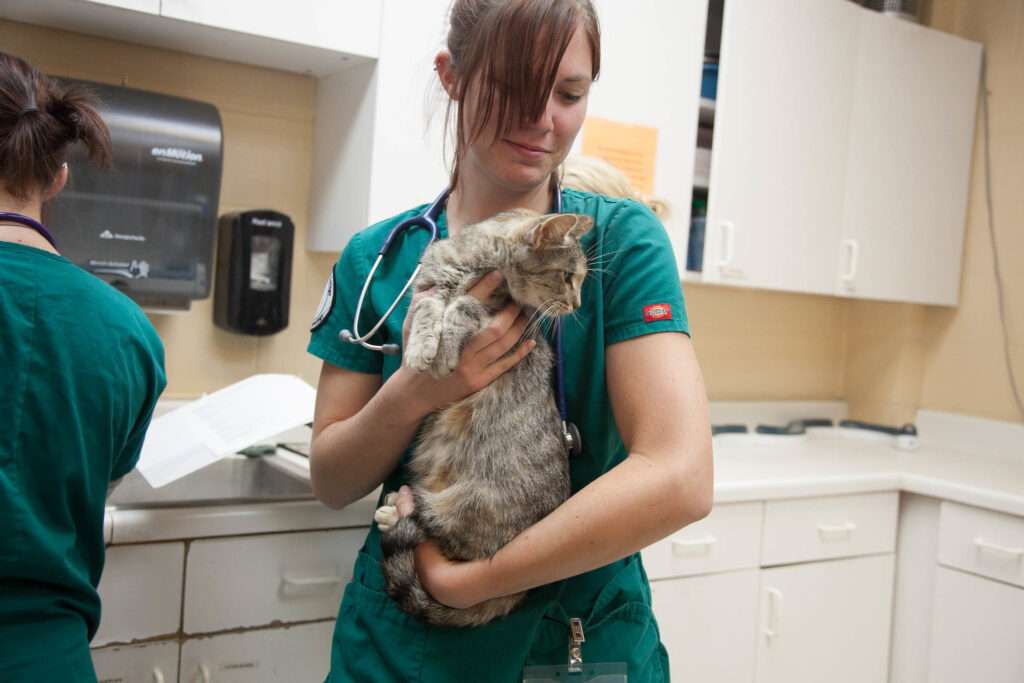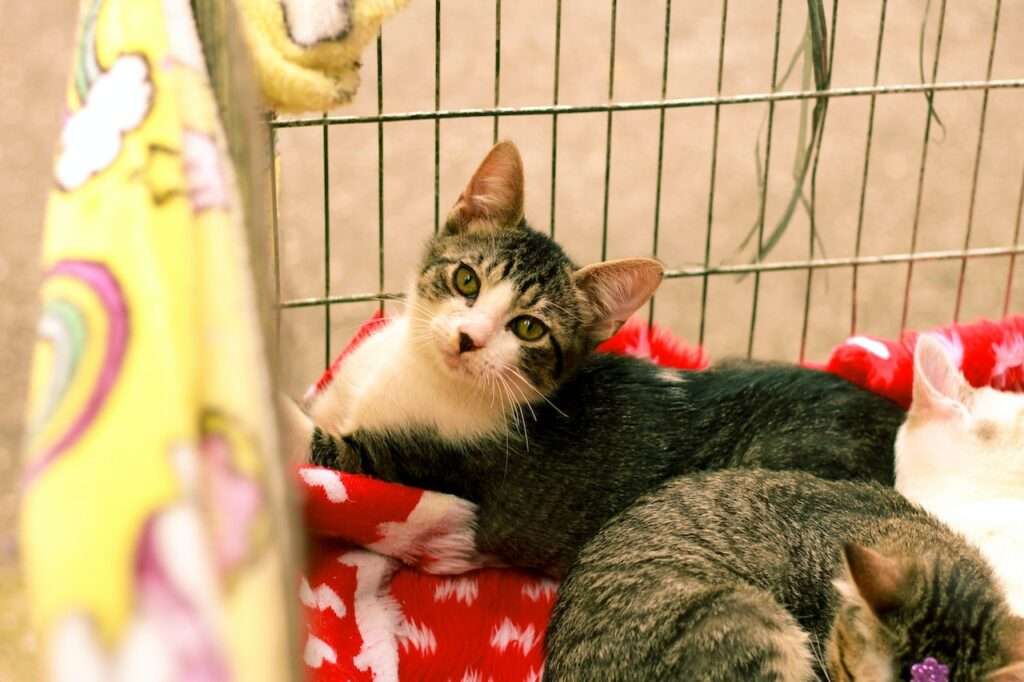The Ultimate Guide: What to Know Before Adopting a Cat
Bringing a cat into your life is a decision that can enrich your days with joy, companionship, and endless cuddles. But before you embark on this life-changing journey, it’s important to be well-informed and prepared for the responsibilities that come with cat ownership.
In this comprehensive guide, we will delve into the essential aspects of cat ownership, ensuring you are well-equipped to provide the love and care your feline friend deserves. So, let’s explore the key factors you need to know before bringing a cat into your home.
What to Know Before Adopting a Cat
As you contemplate adopting a cat, it’s crucial to assess your readiness for the commitment involved. Cats can live for 15 to 20 years or more, and during that time, they rely on you for their well-being. Here are a few factors to consider:
- Lifestyle Factors: Cats require time, attention, and care. Evaluate your daily routine and determine if you can commit to their needs. Consider factors such as your work schedule, social commitments, and travel plans. Cats are social animals and crave companionship, so it’s important to ensure you have enough time to spend with them.
- Financial Considerations: Owning a cat involves financial responsibilities. In addition to the initial adoption fee, there are ongoing expenses like food, veterinary care, grooming supplies, toys, and accessories. Ensure that your budget can accommodate these costs to provide your cat with the care they deserve.
- Living Situation and Space: Take into account your living arrangements. If you rent, ensure that your landlord allows pets and inquire about any restrictions or additional fees. Consider the size of your home or apartment and whether it can comfortably accommodate a cat, allowing them space to explore, play, and relax.
Considering Allergies and Health Concerns
Before adopting a cat, it’s crucial to consider any allergies or health concerns that may arise. Some people are allergic to cat dander, which can cause discomfort and allergic reactions. If you or anyone in your household has allergies, spend time around cats to assess the severity of the reactions. Consulting with a medical professional or allergist can provide valuable insights into managing allergies while owning a cat.
Moreover, it’s essential to be aware of potential health concerns. Cats, like any other pets, require regular veterinary care, vaccinations, and preventive treatments. Consider the costs associated with these routine medical expenses and ensure that you can provide the necessary care to keep your feline companion healthy.
Understanding the Long-Term Commitment
Adopting a cat is a long-term commitment, and it’s important to understand the implications of this decision. Cats form strong bonds with their human caregivers and thrive on stability and routine. As a responsible cat owner, you’ll be responsible for their well-being throughout their life.
Consider how your life may change in the future. Are you planning to have children or move to a different location? Ensure that you can accommodate your cat’s needs and well-being during these transitions. Cats are not disposable companions but rather cherished family members who rely on your love and care.
By carefully assessing your readiness and understanding the long-term commitment, you can embark on your cat adoption journey with confidence, knowing that you are fully prepared to provide a loving and nurturing home for your new feline friend. Stay tuned for the next section, where we will delve into researching cat breeds and personalities to find the perfect match for your lifestyle and preferences.
Researching Cat Breeds and Personalities
Every cat is unique, but different breeds have distinct characteristics and personalities. Understanding these traits can help you find a cat that aligns with your lifestyle and preferences. The world of cat breeds is vast and diverse, ranging from long-haired to short-haired, small to large, and everything in between.
Each breed has its own set of characteristics and temperaments. Some popular breeds include Maine Coons, Siamese, Persians, and Bengals, but there are numerous others to explore. By learning about different breeds, you can make an informed decision and find the perfect feline companion for you.
Factors to Consider When Choosing a Breed
When selecting a breed, consider the following factors to ensure a compatible match:
- Activity Level: Some cats are more energetic and playful, requiring plenty of exercise and stimulation. Others are more laid-back and prefer a calm and relaxed environment. Assess your energy levels and the amount of time you can dedicate to engaging with your cat to find a breed that matches your activity level.
- Temperament and Personality Traits: Cats have varying temperaments, ranging from independent and aloof to social and affectionate. Research different breeds to find one that matches your desired level of interaction and companionship.
- Grooming Requirements: Cat breeds differ in their grooming needs. Long-haired breeds may require regular brushing to prevent matting, while short-haired breeds are generally low-maintenance in this regard. Consider your willingness and ability to provide the necessary grooming for different breeds.
Mixed Breed Cats: A Unique Blend of Traits
While purebred cats have their distinct characteristics, don’t overlook the charm and beauty of mixed breed cats. These feline companions often possess a unique combination of traits, making them one-of-a-kind. Mixed breed cats are often found in shelters and rescue organizations, where you can find a loving and loyal companion who will bring endless joy to your life.
Preparing Your Home for a Cat
Before bringing your new cat home, it’s essential to create a safe and stimulating environment where they can thrive. Here are some steps to ensure your home is cat-friendly:
Creating a Safe and Stimulating Environment
- Cat-Proofing Hazards: Cats are curious creatures, prone to exploring every nook and cranny. Secure loose wires, remove toxic plants, and ensure that cleaning chemicals and medications are safely stored away. Keep fragile or valuable items out of reach to prevent accidents.
- Providing Vertical Spaces and Perches: Cats love to climb and perch up high. Install cat trees, shelves, or window perches to provide vertical spaces where your cat can relax, observe their surroundings, and satisfy their natural instinct to climb.
- Offering Interactive Toys and Enrichment Activities: Keep your cat mentally stimulated and entertained by providing a variety of toys, scratching posts, and puzzle feeders. These activities not only prevent boredom but also encourage exercise and maintain your cat’s overall well-being.
Setting Up a Comfortable Resting Area
- Choosing the Right Cat Bed: Cats appreciate having a cozy and comfortable place to rest. Invest in a cat bed that suits their size and provides adequate cushioning and warmth. Consider placing the bed in a quiet corner or near a window where they can enjoy a view or bask in the sunlight.
- Designing a Litter Box Area: Set up a litter box in a quiet and easily accessible area. Cats prefer privacy when using the litter box, so choose a spot away from high foot traffic. Ensure you have one litter box per cat, plus an extra, and keep them clean by scooping daily.
- Establishing Scratching Posts and Cat Trees: Cats have a natural instinct to scratch. Provide designated scratching posts or cat trees to satisfy this instinct and protect your furniture. Opt for sturdy and tall scratching surfaces to accommodate your cat’s stretching needs.
By creating a safe and stimulating environment, you are setting the stage for a happy and healthy cat. In the next section, we will explore the essential necessities and supplies you’ll need to care for your new feline friend. Stay tuned for helpful tips on choosing the right food, grooming tools, and enrichment accessories.
Necessities and Supplies for Cat Care
To provide optimal care for your cat, it’s important to have the necessary supplies on hand. Here are some essential items to include in your cat care toolkit:
- High-Quality Cat Food and Water Bowls: Choose a nutritionally balanced cat food that meets your cat’s specific dietary needs. Opt for stainless steel or ceramic bowls that are easy to clean and won’t harbor bacteria.
- Proper Litter and Litter Box: Select a litter that your cat prefers and that is easy to scoop and maintain. There are various types available, including clumping, non-clumping, and natural alternatives. Place litter boxes in quiet, easily accessible areas.
- Collar, Identification Tags, and Microchipping: Ensure your cat wears a collar with identification tags that include your contact information. Microchipping is an additional safety measure that can help reunite you with your cat if they ever get lost.
Grooming Tools and Supplies
Regular grooming helps maintain your cat’s coat, hygiene, and overall well-being. Here are some grooming tools and supplies to have on hand:
- Brushes, Combs, and Nail Clippers: Different coat types require specific grooming tools. Long-haired cats may need regular brushing to prevent matting, while short-haired cats benefit from occasional grooming. Trim your cat’s nails with specialized nail clippers designed for cats.
- Dental Care Products: Dental health is important for cats. Use a cat-friendly toothbrush and toothpaste to keep their teeth clean and prevent dental issues. Dental treats and toys can also help maintain oral hygiene.
Toys, Treats, and Enrichment Accessories
Enrichment and playtime are crucial for your cat’s mental and physical well-being. Here are some items to keep your cat entertained and engaged:
- Interactive Toys and Puzzle Feeders: Stimulate your cat’s natural instincts with interactive toys, such as feather wands, laser pointers, and treat-dispensing puzzles. These toys provide mental stimulation and encourage physical activity.
- Catnip and Treats for Training and Bonding: Catnip can be a great source of entertainment for many cats. Use it sparingly and observe your cat’s reaction. Treats are useful for training, rewarding good behavior, and strengthening the bond between you and your cat.
Health and Veterinary Care

Regular veterinary care is essential to keep your cat healthy and detect any potential health issues. Here’s what you need to know about cat health and veterinary care:
Finding a Trusted Veterinarian
Choosing a veterinarian you trust is paramount to your cat’s well-being. Consider the following when selecting a vet:
- Recommendations and Research: Seek recommendations from friends, family, or local pet communities. Research potential veterinarians’ qualifications, experience, and reviews to ensure they align with your expectations.
- Initial Health Check-up and Vaccinations: Schedule an initial health check-up for your new cat. The veterinarian will perform a thorough examination and administer necessary vaccinations to protect against common diseases.
Preventive Care and Routine Examinations
Preventive care plays a crucial role in maintaining your cat’s health. Regular veterinary examinations and preventive treatments are essential. Consider the following:
- Parasite Prevention (Fleas, Ticks, and Worms): Protect your cat from parasites by using veterinarian-approved flea and tick preventives and administering deworming treatments as recommended.
- Dental Care and Teeth Cleaning: Dental issues are common in cats. Discuss dental care options with your veterinarian, including professional cleanings and at-home dental care routines.
- Vaccination Schedule and Booster Shots: Vaccinations protect your cat from contagious diseases. Follow your veterinarian’s recommended vaccination schedule and ensure that booster shots are administered as needed.
Recognizing Signs of Illness and Emergency Preparedness
It’s important to be aware of potential signs of illness in cats. Monitor your cat’s behavior, appetite, litter box habits, and overall appearance. If you notice any concerning symptoms, contact your veterinarian. Additionally, prepare for emergencies by having a pet first-aid kit, emergency contact numbers, and a plan in place for immediate veterinary care.
By providing your cat with the necessary supplies, grooming tools, enrichment accessories, and regular veterinary care, you’re ensuring their health and happiness. In the next section, we will explore the process of finding the perfect cat through adoption or rescue organizations. Stay tuned for valuable tips on selecting the right source and the steps involved in bringing your new furry friend home.
Behavioral Considerations and Training
Understanding your cat’s behavior and providing appropriate training are crucial for a harmonious and well-adjusted household. Here are some key behavioral considerations and training tips:
- Understanding Feline Communication: Cats communicate through body language, vocalizations, and behavior. Learn to interpret their cues, such as tail positions, ear movements, and vocalizations, to understand their moods and needs.
- Litter Box Training: Most cats instinctively know how to use a litter box. However, if your cat is having accidents or not using the litter box consistently, consult with your veterinarian to rule out any underlying medical issues. Ensure the litter box is clean and easily accessible.
- Positive Reinforcement Training: Use positive reinforcement techniques, such as treats, praise, and playtime, to reward desired behaviors and discourage unwanted behaviors. Consistency, patience, and gentle guidance will help shape your cat’s behavior.
- Environmental Enrichment: Provide a stimulating environment that caters to your cat’s natural instincts. Offer scratching posts, climbing trees, interactive toys, and hiding spots to keep them mentally and physically engaged.
Budgeting for Cat Ownership
Cat ownership comes with financial responsibilities. To ensure that you can provide the best care for your feline companion, consider the following budgeting factors:
- Initial Costs: The initial costs of adopting a cat include adoption fees, spaying or neutering, vaccinations, microchipping, and basic supplies like litter boxes, food bowls, and toys.
- Ongoing Expenses: Budget for recurring expenses such as high-quality cat food, litter, routine veterinary care, grooming supplies, preventive medications, and toys. Additionally, factor in unexpected veterinary visits or emergencies.
- Pet Insurance: Consider purchasing pet insurance to help cover veterinary costs. Research different insurance providers, compare plans, and choose a policy that suits your needs and budget.
- Cat-Proofing Your Home: Invest in cat-proofing measures, such as cord protectors, secure window screens, and durable furniture, to prevent accidents and potential damage.
- Pet Sitting or Boarding: If you travel frequently or require pet care services, allocate funds for pet sitting, boarding, or hiring a pet caregiver.
Planning and budgeting for cat ownership will ensure that you can provide your feline companion with the care, love, and attention they deserve. In the next section, we will explore the rewards of adopting a cat from a shelter or rescue organization. Stay tuned for heartwarming stories and the benefits of giving a homeless cat a second chance at a loving home.
Adopting a Cat: Shelter, Rescue, or Breeder?

When it comes to adopting a cat, you have several options: shelters, rescue organizations, or breeders. Each option has its own considerations and benefits. Let’s explore them:
- Shelters: Animal shelters are a wonderful place to find a cat in need of a loving home. Shelters often have a variety of cats of different ages, breeds, and personalities. By adopting from a shelter, you not only provide a cat with a second chance but also free up space for more animals in need. Additionally, shelters typically provide vaccinations, spaying/neutering, and initial medical care, reducing your initial costs.
- Rescue Organizations: Rescue organizations focus on finding homes for cats that have been abandoned, neglected, or surrendered. They often operate with dedicated volunteers and foster homes. Working with a rescue organization allows you to connect with cats that have been placed in nurturing environments, where their personalities and behavior can be assessed. Rescue organizations also provide valuable support and guidance during the adoption process and beyond.
- Breeders: If you have specific preferences for a particular breed and want to ensure the cat’s lineage and background, reputable breeders can be an option. However, it’s crucial to research and choose a responsible breeder who prioritizes the health and well-being of their cats. Responsible breeders will provide documentation, health guarantees, and a wealth of knowledge about the breed.
No matter which route you choose, always prioritize the welfare of the cat and ensure that the source aligns with your values and expectations. Remember, adopting a cat is a rewarding experience, and providing a forever home to a cat in need is an incredibly fulfilling act of kindness.
Conclusion
Congratulations on taking the first steps towards adopting a cat! By delving into this comprehensive guide, you have equipped yourself with essential knowledge and considerations for welcoming a feline friend into your life.
We have explored the importance of assessing your readiness for cat ownership, understanding cat breeds and personalities, preparing your home, providing proper care and veterinary attention, training and behavioral considerations, budgeting for cat ownership, and the various adoption options available.
Bringing a cat into your life is a commitment that will fill your days with love, joy, and unforgettable moments. Whether you choose to adopt from a shelter, rescue organization, or reputable breeder, remember that you have the power to make a positive impact on a cat’s life.
As you embark on this wonderful journey, remember to approach cat adoption with patience, understanding, and an open heart. The bond you will create with your feline companion will be truly special. Wishing you a lifetime of happiness and endless purrs with your new furry family member!
Frequently Asked Questions
How can I help my cat adjust to a new home?
Moving to a new home can be stressful for cats. Set up a quiet, comfortable space with familiar belongings like bedding and toys. Gradually introduce them to different areas of the house and provide plenty of hiding spots and vertical spaces. Stick to a routine, offer gentle affection, and give them time to acclimate at their own pace.
How long does it typically take for a cat to adjust to a new home?
Cats can take several weeks to several months to fully adjust to a new home. It’s important to give them space and time to explore their new environment at their own pace. Providing familiar items like blankets or toys can help them feel more comfortable during the transition.
What should I consider when choosing a cat to adopt?
When choosing a cat, consider the cat’s age, personality, and energy level in relation to your lifestyle. Think about whether you want a playful kitten or a more sedate adult cat. Assess the commitment you’re willing to make in terms of grooming, especially if you’re looking at long-haired breeds. It’s also important to consider if you’re prepared to handle potential health issues that may come with senior cats or certain breeds.
Should I adopt a cat with special needs?
Adopting a cat with special needs, such as physical disabilities, chronic health issues, or behavioral challenges, can be rewarding but requires a commitment to provide the necessary care and attention. Consider whether you have the resources, time, and patience to meet the cat’s needs before making the decision to adopt.
How do I choose the right food for my adopted cat?
To choose the right food for your adopted cat, consider their age, weight, activity level, and any special dietary needs or restrictions. High-quality commercial cat foods that are age-appropriate (kitten, adult, senior) and meet the AAFCO (Association of American Feed Control Officials) guidelines are generally recommended. Consult with a veterinarian for personalized advice, especially if your cat has specific health concerns.
What are the financial responsibilities of cat ownership?
The financial responsibilities of cat ownership include ongoing costs such as food, litter, routine veterinary care, vaccinations, spay/neuter surgery, and unexpected medical expenses. Additionally, consider costs for pet insurance, boarding or pet-sitting services, and miscellaneous items such as toys, scratching posts, and bedding.
How often should I take my cat to the veterinarian?
Regular veterinary check-ups are essential for your cat’s health. Generally, an annual wellness exam is recommended, but it may vary based on your cat’s age and health condition. Vaccinations, dental cleanings, and preventive treatments should also be discussed with your veterinarian to ensure your cat’s well-being.
What are some common behavioral issues in cats and how can I address them?
Common behavioral issues in cats include scratching furniture, avoiding the litter box, aggression, and excessive meowing. To address these issues, provide appropriate outlets for natural behaviors, such as scratching posts and interactive toys. Ensure the litter box is clean, in a quiet location, and that you have one more box than the number of cats in the home. For aggression or other complex behaviors, seek advice from a veterinarian or a professional cat behaviorist.
What should I do if my cat exhibits behavioral issues?
If your cat displays behavioral issues such as aggression, excessive scratching, or inappropriate elimination, it’s important to address the underlying cause. Consult with a veterinarian or a professional animal behaviorist who can help identify triggers and develop a behavior modification plan. Avoid punishment and focus on positive reinforcement and redirecting unwanted behaviors.
Can I leave my cat alone during the day while I’m at work?
Yes, cats can be left alone during the day while you’re at work, especially if they have enough stimulation like toys, a comfortable resting place, and a view of the outdoors. However, they shouldn’t be left alone for extended periods without human interaction as they can become lonely or bored, which may lead to behavior issues.
What are some of the red flags when adopting a cat?
When adopting a cat, be cautious of red flags that may indicate potential issues. Look out for aggressive behavior, poor health condition, lack of socialization, limited interaction, or behavioral problems. Assess the situation carefully and consider seeking advice from professionals if needed.
How do I introduce a new cat to my existing pets?
Introducing a new cat to your existing pets should be done gradually. Start by keeping them in separate rooms and allow them to sniff each other’s scent under the door. Gradually increase supervised interactions and provide positive reinforcement for calm and friendly behavior. It may take time for them to adjust, so be patient and monitor their interactions closely.
What is the average lifespan of a cat?
The average lifespan of a cat can vary depending on factors such as breed, genetics, and overall health. On average, cats live between 12 to 15 years, but it’s not uncommon for cats to live into their late teens or even early twenties with proper care, nutrition, and veterinary attention.
We hope this FAQ section has provided helpful answers to common questions. Remember, if you have any specific concerns or questions regarding your cat’s health or behavior, it’s always best to consult with a veterinarian for personalized advice.





